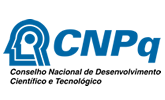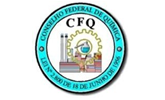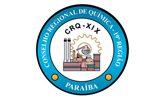EVALUATION OF GUAVA PULP AND MANGO MARKETED IN PUGMIL-TO
ISBN 978-85-85905-25-5
Área
Alimentos
Autores
Morais, K.V.M. (IFTO CAMPUS PARAÍSO DO TOCANTINS) ; Viroli, S.L.M. (IFTO CAMPUS PARAÍSO DO TOCANTINS) ; Santos, M.R. (IFTO CAMPUS PARAÍSO DO TOCANTINS) ; Costa, L.F. (IFTO CAMPUS PARAÍSO DO TOCANTINS)
Resumo
The consumption of frozen fruit pulp has been growing every year due to the practicality and concern to consume healthier foods. The research analyzed guava and mango pulps commercialized in Pugmil - TO. Physicochemical analyzes of Soluble Solids -SST; Total Titratable Acidity - ATT; Vitamin C, electrical conductivity - C.E and hydrogen potential - pH followed the methodologies Instituto Adolf Lutz. The guava pulp presented 67,26 mg of Vitamin C; 0,91 g for ATT; 7,23 ° Brix for STT; 3,71 for pH; 2,87 μS / cm for C.E. Mango pulp presented 66,14 mg of Vitamin C; 0,93 g for ATT; 12,70 ° Brix for SST; 3,62 for pH and 2,86 μS / cm for C.E. Guava and mango pulps presented the analyzed chemical physical parameters, except for electrical conductivity, within the standard required by legislation.
Palavras chaves
Pulps; Mango; GUAVA
Introdução
According according to SDA Normative Instruction N° 37 of 01/10/2018, the definition of fruit pulp is the unfermented, undiluted, undiluted product obtained from pulpy fruits, by an appropriate technological process, with a minimum total solids content from Edible part of the fruit. It can be simple when originating from only one fruit, or mixed when originating from two or more (BRAZIL, 2018). The need for guidelines for the elaboration of Identity and Quality Standards (PIQ) for frozen tropical fruit pulp is present, due to the commercialization of the product, organoleptic characteristics: color, flavor, aroma and texture and health quality (OLIVEIRA et al ., 1998). Tropical fruits are important sources of antioxidants. However, most of these fruits are quite perishable and their postharvest losses can be reduced by processing the fruits into a variety of products such as pulp, juices and nectars (MAIA et al., 2009). Freezing fruit pulp is a conservation method that preserves the characteristics of the fruit and allows its consumption during off-season (MATTA et al. 2005). Therefore, fruit processing aims to increase the shelf life of products, adding value to them by turning them into new products. Processing facilitates their consumption, especially seasonal ones, by spreading them to other regions where there are no products, as well as being able to take advantage of surplus production and provide greater profitability in marketing (SILVA et al., 2010). The present work aimed to analyze and compare the results obtained with current legislation to the physicochemical characteristics of industrialized guava and mango pulp sold in Pugmil – TO.
Material e métodos
Monthly samples of guava pulp marketed in the city of Pugmil - TO were collected from January to June 2018. The samples were packed in thermal boxes and sent for analysis in the General Biochemistry laboratory of the Federal Institute of Science, Technology and Education of the State. Tocantins-TO, Paraíso do Tocantins Campus. For all analyzes, the fruit pulps were thawed, homogenized and undiluted. The samples were placed in 100ml beaker, with three repetitions for each flavor. Hydrogen ionic potential (pH) was measured by diluting 10 g of the sample in 100 mL of distilled water using a previously calibrated digital potentiometer. Total titratable acidity analysis was performed by diluting approximately 5 grams of the sample in 20 mL of water, accompanied by 5 drops of phenolphthalein. Following these procedures, titration was performed with a sodium hydroxide solution (0.1 mol / l NaOH). For its realization, soluble solids by refractometry were directly read on an Abbé bench refractometer at room temperature (20 ° C). Vitamin C analysis was performed by the potassium iodate method. Electrical conductivity readings were performed using a digital conductivity meter. The physical chemical parameters analyzed followed the methodologies indicated by the Adolf Lutz Institute (IAL. 2008) and compared with SDA Normative Instruction N° 37 of 01/10/2018 approving the General Technical Regulation for setting the Identity and Quality (BRAZIL, 2018).
Resultado e discussão
The results of the physicochemical analyzes of the analyzed fruit pulps are
presented in Table 1. For comparison purposes, the values are shown in Table
2,
according to SDA Normative Instruction N° 37 of 01/10/2018.The guava and
mango
pulps analyzed presented values for the physicochemical parameters, except
for
the electrical conductivity, within the recommended by the SDA Normative
Instruction No 37 OF 01/10/2018. The vitamin C analysis of guava and mango
pulps
presented values of 68,42 mg / 100 g and 67,26 mg / 100 g. Silva et al.
(2010)
found for analysis of vitamin C in mango pulps equal to 55,99 mg / 100 g
lower
value than found in this research. Nascimento et al. (2012) found average
values
of 65,61 mg / 100 g for guava pulps. The result obtained in mango pulp is
superior to that reported in the literature, such as the work of Brunini et
al.
(2002), who reported average values of 34,65 mg / 100 g. ATT values
expressed as
citric acid in guava pulp, mango were 0,64%, 0,91% respectively, indicating
compliance with the PIQ standard. The value obtained for mango pulp in this
research is below the value cited by Bueno et al. (2002), which was 1,0%.
The
acidity of fruits is an important parameter in the analysis of the state of
preservation, as the malic, tartaric, citric and pyruvic acids, being
volatile,
contribute to the aroma of the fruit and pulp, which is attractive to
consumers
(CHITARRA; CHITARRA, 2002). Measurement of pH in certain foods provides an
indication of their degree of spoilage, and is important data in assessing
the
state of preservation of a food product (MACEDO, 2001).The pH values found
in
this research were 3,71 for guava and 3,62 mango, therefore in accordance
with
the legislation.

Physical and chemical parameters of frozen fruit pulp marketed in the central region of Paraíso do Tocantins

Identity and Quality Standards of Frozen Fruit Pulps
Conclusões
According to the data obtained and discussed, it is concluded that the physicochemical characterization of frozen tropical fruit pulp of guava and mango meets the requirements of Brazilian legislation and the results are in agreement with those described in the literature. Therefore it can be stated that such a product becomes suitable for human consumption.
Agradecimentos
A DEUS AO IFTO CAMPUS PARAÍSO DO TOCANTINS AOS PROFESSOR SÉRGIO LUIS MELO VIROLI
Referências
BRASIL. Instrução Normativa SDA MAPA nº 37, de 1 de outubro de 2018, continuação, Anexo II, publicada no Diário Oficial da União, em 8 de outubro de 2018, Edição 194, Seção 1, "Página 28 Instrução Normativa SDA Nº 37 DE 01/10/2018.
BRUNINI, M. A., DURIGAN, J. F., OLIVEIRA, A. L. Avaliações das alterações em polpa de manga ‘Tommy-Atkins’ congelada. Revista Brasileira de Fruticultura, Jaboticabal, 2002.
BUENO, S. M. et. al. Avaliação da qualidade de Polpas de Frutas Congeladas. Revista Instituto Adolfo Lutz, v. 62, n. 2, p. 121-126, 2002.
CHITARRA, M. I. F.; CHITARRA, A. B. Pós-colheita de frutas e hortaliças. 2 ed. Editora UFLA. Lavras. 2002.
INSTITUTO ADOLFO LUTZ. Métodos físico-químicos para análise de alimentos. São Paulo-SP, 2008. 1000p.
NASCIMENTO, C. R., NEVES, L. C., GRÍGIO, M. L., CAMPOS, A J., CHAGAS, E. A., SOUZA, A. A. Avaliação da qualidade de polpas de frutos industrializadas e comercializadas no município de Boa Vista RR. Revista On-line, v. 6, n. 3, p 263-267, 2012.
MACEDO, J.A.B. Métodos laboratoriais de análise físico-químico e microbiológicas. Águas e águas. Jorge Macedo. Juiz de Fora, 2001. p 01-52.
MAIA, G. A. Processamento de frutas tropicais – Nutrição, produtos e controle de qualidade. Fortaleza: Edições UFC. 2009. 277p.
MATTA, V. M. da. Polpa de fruta congelada. Brasília, DF: Embrapa Informação Tecnológica, 2005.
OLIVEIRA, M. E. B. et. al. Qualidade de polpas congeladas de frutas, fabricadas e comercializadas nos estados do Ceará e Rio Grande do Norte. B. CEPPA, v. 16, n. 1, Curitiba, p. 13-22,1998
SILVA, A. L. da et al. A Cultura da Goiaba. 2. ed. Brasília: Embrapa, 2010. 186 p. (Plantar). EMBRAPA.









